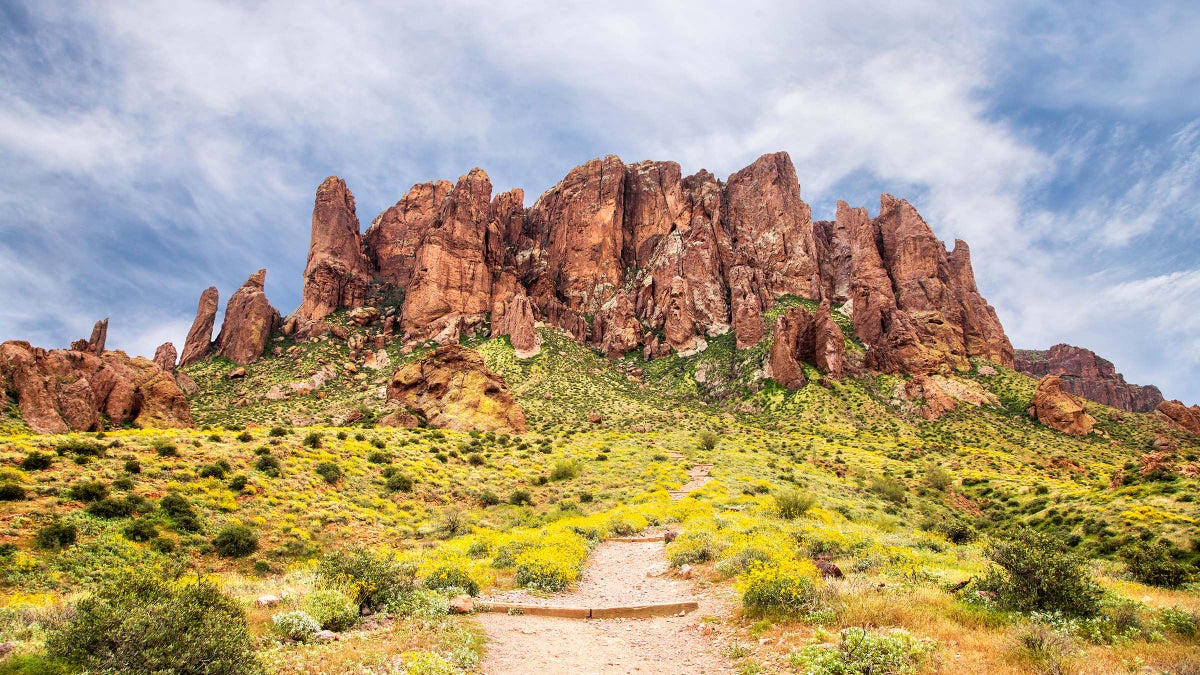Products You May Like
Receive $50 off an eligible $100 purchase at the Outside Shop, where you’ll find gear for all your adventures outdoors.
Sign up for Outside+ today.
This week, 21-year old Richard Jacobson made a deadly mistake when he lost his footing while snapping a photo in Arizona’s Lost Dutchman State Park and suffered a fatal fall. According to the Pinal County Sheriff’s Office, law enforcement retrieved his body with a helicopter from 700 feet below the summit of Flatiron Summit.
“The reporting party stated he and his friend were camping on top of [Flatiron] when his friend went to the edge to take a photo and slipped,” the office told People Magazine.
Jacobson isn’t the only hiker to have fallen prey to a deadly snapshot. Last year, Spain’s iO Foundation found at least 379 people died from selfies between 2008 and 2021. That’s one fatal accident every 12.5 days while snapping a selfie.
According to this same study, the United States was the second leading nation for selfie deaths with at least 39 deadly incidents. (India led the way with 100 incidents, many of which were due to train collisions.) Across the board, the most common selfie deaths were from falls off waterfalls, cliffs, and buildings, accounting for about 50% of incidents.
The United States’ wild places have seen their fair share of photo-related fatalities. In 2018, tourists in Yosemite found a camera on a tripod at the top of Taft Point. They alerted park authorities who, some 800 feet below, located the bodies of Meenakshi Moorthy and Vishnu Viswanath, a married couple from India who visitors had spotted near the unprotected edge of the cliff the day before. The Grand Canyon has been another hotspot for photo-related deaths, including a Chinese tourist who plunged 1,000 feet off the rim of the canyon in March 2019 while taking pictures. In the wake of that incident, the National Park Service announced it would observe “Safe Park Selife Day” and launched a website urging visitors to exercise care while taking photos in dangerous spots.
“We get it—national parks have some pretty photogenic scenery,” the NPS wrote on its site. “The views are truly magnificent. While we want you to capture all of the splendor of our amazing parks, do not put your life at risk for a picture.” Still, the deaths have continued: In 2020, 59-year-old Maria A. Salgado Lopez fell 100 feet in the Grand Canyon after accidentally stepping off a ledge near the South Rim while snapping photos, an incident which some nearby visitors accidentally captured on video.
Some researchers hope for a technological solution. Carnegie Mellon University PhD student Henmank Lamba and a team of researchers hope to take selfie safety up a notch with the development of an app that could alert users to dangers like cliffs and railroad tracks. The team’s current algorithm utilizes a mixture of location services and imaging technology to determine when users are in an unsafe situation; they estimate it is currently about 70% accurate.
In the meantime, the president of the iO Foundation suggests evaluating particularly dangerous areas, in order to create more effective warnings to hikers. For its part, the National Park Service urges hikers to watch their step, try not to step backwards while taking photographs, stay away from cliff areas, and be considerate of other photographers. Doing so could help to eliminate a deadly fall.
